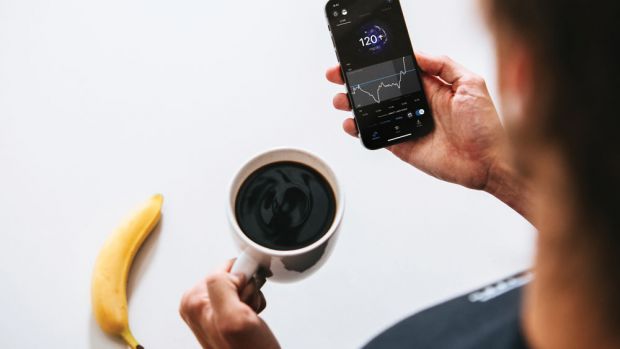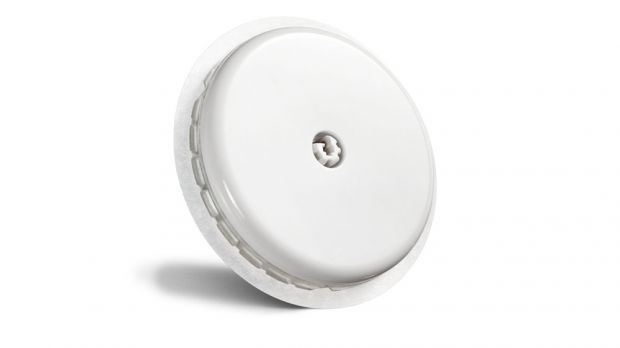You can trust Coach
It’s no secret that optimal fuelling is key to exercise performance, and this is especially true for endurance sports like running and cycling. Watch the London Marathon any given year and you’ll see tens of thousands of people squeezing running gels into their mouths, or grabbing fistfuls of jelly babies from helpful spectators.
Most of what is being consumed is packed with glucose, because glucose is the primary source of energy for the body, especially during intense exercise. If your blood glucose gets too low during something like a marathon, you’re liable to hit the wall and see your performance levels dive.
Until recently maintaining the right amount of glucose in the body during endurance events was something athletes learned to do through hard-won experience. It only takes one calamitous blow-out in a long run or cycle to teach you the importance of getting your nutrition right.
Now, though, you can be far more precise with your nutrition by using continuous glucose monitors. These have traditionally been used by diabetics to maintain a healthy blood glucose level, but companies like Supersapiens are adapting the technology to provide athletes with greater insights about their body.
Supersapiens was founded by Phil Southerland, who is also behind Team Novo-Nordisk, a team of elite cyclists, triathletes and runners who are all diabetics. Supersapiens uses Abbott’s Libre Sense Glucose Sport Biosensors, which you attach to your upper arm so it can measure your blood glucose levels and send that info to the Supersapiens app.
Within the app you can see how your levels rise and fall throughout the day, and log things like activities and meals to see how your blood glucose is affected. The app provides a general zone to aim for as well as a target for your blood glucose variability – the amount your levels rise and fall throughout the day.
The onus is very much on you to use that info to track your levels and note what you should be aiming for during exercise in order to perform at your best. It’s definitely best to think of Supersapiens as a tool you use to assess and refine your nutrition strategy yourself, rather than a prescriptive app telling you what to do.
Sign up for workout ideas, training advice, reviews of the latest gear and more.
As a very keen runner chasing a sub-2hr 30min marathon this year, my goals using the sensor were purely related to performance. Early excitement at the thought of improvements quickly faded in the face of a surfeit of data I had little idea of how to interpret. My knowledge of blood glucose was minimal and the Supersapiens app is not all that helpful unless you possess some existing knowledge.
I didn’t know how much my levels should spike after a meal, for example, or that it’s standard to get a big spike in glucose at the start of a workout. I was rarely in the target range initially set, and only discovered through conversations with Supersapiens representatives that you should establish what your rough average is and then set your own target range.
After such conversations, the penny dropped that the app is a tool, and that it was going to take a lot of work on my end to get the most from it. It’s essential to log your exercise manually in it, for one, and then consider how you felt during the exercise and match that feeling with your blood glucose until you can define your “performance zone” – when your blood glucose is optimal for endurance exercise.
Once you have nailed this, and your overall target zone, Supersapiens becomes much more useful. Then you can start testing different fuel sources and work out when to use them during exercise, how long they’ll keep you in the right zone, and how long it takes for them to work (so you’re not using a gel when it’s already too late and you’re heading for a crash).

You can also use the app to improve your diet by reducing your blood glucose variability. It’s no surprise that eating sugary foods spikes your blood sugar, but seeing that writ large on a graph may well prompt you to change your menu choices for the better.
Be prepared to spend a lot of money for these insights. A Supersapiens subscription costs €130 (around £113) for a 28-day subscription, for which you get two sensors that last 14 days apiece. You can also buy two sensors for €160 (around £140).
I’d recommend at least a month of use to really get something of value from the service. Assuming you’re following a training plan, you need to do a range of sessions while wearing the sensors, using different fuels to see how they affect you.
It’s also worth wearing the patches in the days leading up to a race or key training session, to ensure you have a carb-loading strategy that gets you to the start line brimming with glycogen to power your muscles.
See related
- What to Eat Before a Run
- How To Carb-Load Before Running A Marathon
- Why Runners Bonk: How to Avoid Hitting the Wall

Applying the sensor to the back of your arm is an easy and painless process, but with two of the three sensors I tried I did start to experience discomfort while wearing them.
My first two weeks rolled by without any problems, but on both the second and third sensors I noticed a dull ache which grew to a sharper pain. I ended up removing them before the two weeks were up because the discomfort was stopping me sleeping.
I asked Supersapiens if the sensor would be replaced if this situation arose, and I was told the sensor would be replaced free of charge if there are any issues with the app or sensor, but for anything else there are no returns or refunds. If you have to take it off due to discomfort, unless you can show it was a problem with the sensor, you’re taking the hit cost-wise.
Supersapiens is planning to launch a wrist reader that will show your blood glucose levels during an activity, and also intends to partner with sports tracker brands so you can see your glucose data and its fluctuations more easily during exercise. This will make it a lot easier to work out things like your performance zone and see how different foods and supplements are affecting you. During my testing I would have to make a note of the times I took gels and then look up my levels at that time in the Supersapiens app.
For now Supersapiens isn’t well developed enough for the mass market, which would probably be more interested in the service’s potential for helping people eat more healthily anyway. And while it may appeal to serious amateur athletes aiming to find an edge, those people are likely to have already worked out some kind of nutrition strategy that works for them. I have one for my running, and while Supersapiens did deliver some insights into how my blood glucose spiked and dropped during runs, it mostly just confirmed that what I was already doing was working. If I decided to move from marathons to ultras or multisport events, I would be keener to use the service to start afresh with my nutritional planning.
Buy from Supersapiens | €130 for 28-day subscription

Nick Harris-Fry is a journalist who has been covering health and fitness since 2015. Nick is an avid runner, covering 70-110km a week, which gives him ample opportunity to test a wide range of running shoes and running gear. He is also the chief tester for fitness trackers and running watches, treadmills and exercise bikes, and workout headphones.

